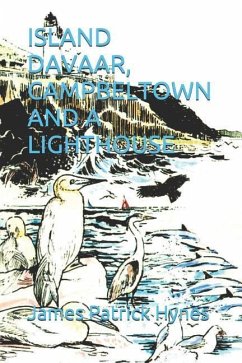Island Davaar (Eilean Dà Bhàrr) is not the smallest of the 800 Scottish islands but its 140 acres certainly places it among the smallest of them. According to the 2011 census ninety five of those islands were inhabited but currently Davaar has no permanent residents only the holiday makers who arrive to enjoy its solitude and its magic. As one of Campbeltown's hidden gems, Davaar Island, lies at the mouth of Campbeltown Loch in an area of littoral sand and stones. The shores around the loch are made up of raised beaches with cliffs on the southern and eastern sides of Island Davaar. The earliest historical written reference to Davaar was made in 1393 when Pope Clement VII mentioned an endowment of the island made by Christina of Mar to the monks of Saddell Abbey, Scotland. In the eighteenth century a lookout sentry was stationed there to keep a sharp look out for the Scottish born American naval hero, John Paul Jones, when he was attacking shipping along the coast. A couple of centuries later the island and the loch were deeply involved in World War Two when the Royal navy used the port regularly for some of its training vessels. In 1943 a submarine on a training exercise sank in neighbouring seas with the loss of all its crew. A recent tragic loss of life on the island was that of Leonard Bennett who was a caretaker/warden on Davaar between 1999 and 4 January 2008 when he met his death on the Dhorlin while driving across it. Most of the 35 illustrations used in this book are his work. An account of his death is given here and the book is dedicated to his memory. Its lighthouse, built in 1854 by the famous lighthouse engineers David and Thomas Stevenson, now automated, still casts its light 23 nautical miles out to sea and across the compound in which stand the holiday cottages. One of those dwellings is The Lookout which was used during WWII as a base for naval crews who maintained anti-submarine nets across the Bay. Davaar Island is one of 43 tidal islands that can be walked to from the mainland of Great Britain and one of 17 that can be walked to from the Scottish mainland. It is linked to the mainland by a natural shingle causeway called the Dhorlin, a wide shingle neck of land, exposed briefly at low tide. From a parking area off Kintyre Way, east of Campbeltown, it takes about 40 minutes to make the crossing to the island on foot over sand, shingle and rocks within a window of 7 hours but walkers are strongly advised to check the times of the tides for safety sake. Tide tables can be obtained in Campbeltown's tourist information office situated on the town pier. Many arrive to see the island's top attractions the lighthouse itself and a life size image of the Crucifixion painted on a cave wall by a local artist Archibald MacKinnon in 1887. During summer months the northern tip of the island is an ideal place to look out for basking sharks, dolphins and even passing whales.








